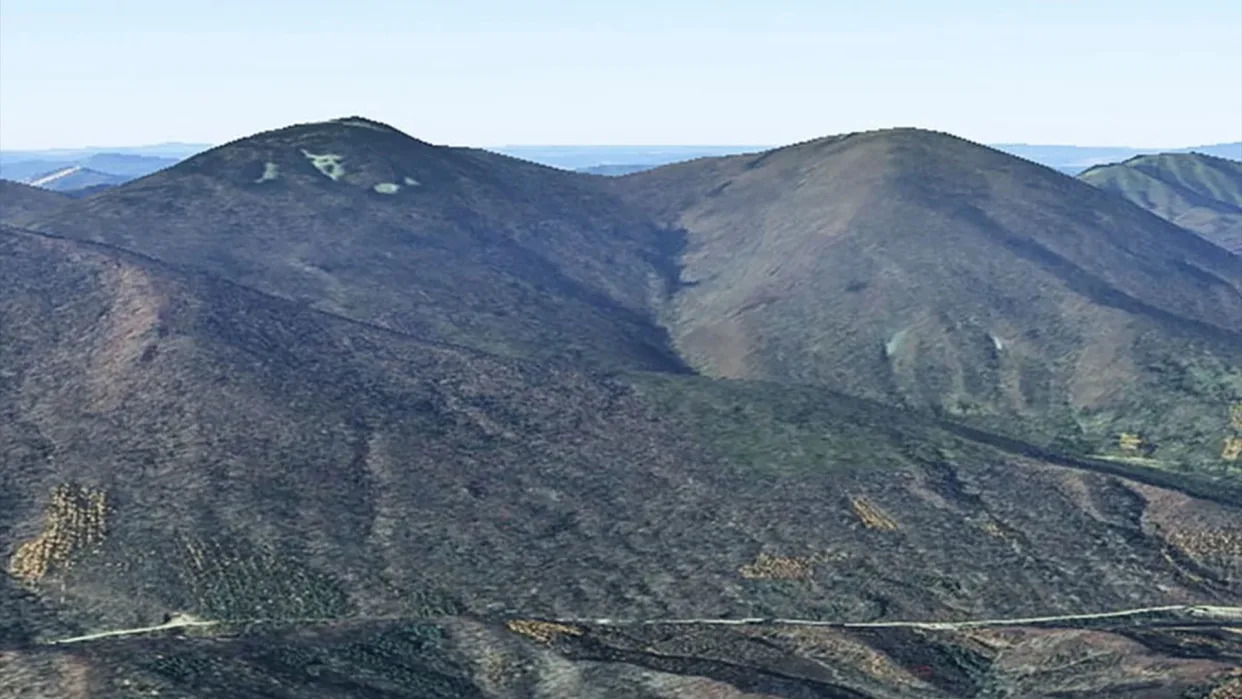Stephanie Pappas
Thu, September 14, 2023

Baijifeng Mountain in China.
A nearly mile-wide (1.6 kilometer) divot in a Chinese mountaintop is actually an impact crater from a long-ago meteorite landing.
The newly discovered crater, located in northeastern China not far from the North Korean border, is the first confirmed mountaintop crater on Earth. Researchers aren't sure when the impact happened, but it left a circular depression and split the mountaintop into two peaks, known as Front Baijifeng and Rear Baijifeng.
The mountain peaks are littered with rock fragments known locally as "celestial stone," which turns out to be a scientifically accurate moniker. According to a new study, published Sept. 1 in the journal Matter and Radiation at Extremes, rocks on the peaks bear the telltale shock patterns of an impact with a space object.
The researchers were intrigued by the shape of the depression between the mountain's two peaks, which spans about 4,593 feet (1,400 meters), and by the debris-like scattering of large sandstone fragments on the mountain.
They collected samples of sandstone and granite from the surface of the possible crater and examined the quartz minerals within. When shocked by huge amounts of heat and pressure, quartz deforms in a particular way, so the team looked for signs of such deformation. The researchers, led by Ming Chen and Ho-Kwang Mao of the Center for High Pressure Science and Technology Advanced Research in Shanghai, found dozens of examples of these deformations in thin slices of rock taken from the crater.
RELATED STORIES
—The largest impact crater on Earth may be beneath Australia
—Massive asteroid hit Greenland when it was a lush rainforest, under-ice crater shows
The granite that makes up the crater formed between 150 million and 172 million years ago, which means the impact must have happened after this period, but the exact timing remains unknown, according to the new paper. Weathering patterns at one of the only other two confirmed impact craters in China — the Yilan crater in Heilongjiang province — are similar to the patterns seen on Baijifeng, the researchers wrote, suggesting their ages might be similar.
Yilan crater, at 49,000 years old, is the largest impact crater under 100,000 years old ever found. The third impact crater in China, also confirmed by Chen, is called the Xiuyan crater, also in the country's northeast.
A very massive crater, known only from the scattered glassy rocks created by the impact that fell as far away as Australia, may also be buried beneath the desert in northwestern China, according to research published in August in the journal Scientific Reports. But scientists have yet to uncover its location.
No comments:
Post a Comment